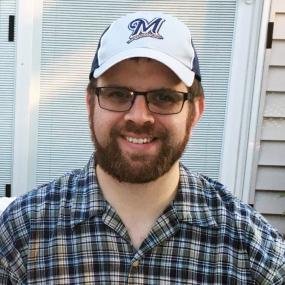Cheap Trick’s Rick Nielsen: “I’m not a virtuoso. I’m a songwriter that plays rhythm guitar – and once in a while I have to play lead”
The drummer who got addicted to guitar discusses his epic gear collection, working with John Lennon and Jeff Beck, and the making of the Rockford, Illinois rock institution’s storming new album, In Another World

Rick Nielsen doesn't always take himself too seriously. Music, however, is another story. He vividly recalls working at his father’s music store in Rockford, Illinois, as a kid and being surrounded by interesting characters. It was hard work, but it was educational.
“I started working when I was eight,” he says. “I goofed off a lot, though I still do… [Laughs] [I remember] the different people I’d meet and the different music I was around – all the Top 40 records and the guitars. I started out as a drummer, so I was most interested in drums, but then I got addicted to guitars. They were easier to carry around. I enjoyed meeting all the different people. I rented Sam Kinison a PA because he was an evangelist in those days!”
Nielsen’s love for music has remained steadfast, and he’s been a cornerstone of Rock and Roll Hall of Famers Cheap Trick – which also features singer/rhythm guitarist Robin Zander and bassist Tom Petersson – since they started out in 1973.
It’s resulted in an impressive string of hits, including If You Want My Love, Dream Police, Surrender, I Want You to Want Me and The Flame, not to mention that aforementioned Rock and Roll Hall of Fame induction, which took place in 2016.
Earlier in 2021, the band released their milestone 20th studio album, In Another World – their first since 2017’s one-two punch of We’re All Alright! and Christmas Christmas. It’s packed with overarching hooks, playful, tongue-in-cheek and optimistic lyrics – not to mention a build-up of energy that hits like a cascading tidal wave.
Nielsen credits the band’s Midwestern upbringing as the catalyst that keeps them going strong after nearly five decades – often playing more than 150 nights a year – which is why it was so tough for them to slow down when the pandemic hit. Fortunately, when the shutdown occurred, they had In Another World in the can and pretty much ready to go. It was recorded – pre-pandemic – at Love Shack Studios in Nashville.
“Everybody in Nashville plays guitar great,” Nielsen says. “I’m glad I’m not competing with those guys. Not that I’m great in any city, but at least I’m different! We’re Cheap Trick. We do what we do. We’re in competition with everybody, but, then again, not really. We’re in competition with ourselves.”
Get The Pick Newsletter
All the latest guitar news, interviews, lessons, reviews, deals and more, direct to your inbox!
Academy Award-nominated producer/songwriter Julian Raymond, who produced the album, has essentially become the fifth member of Cheap Trick in recent years. They’ve been friends for more than three decades.
“Julian understands our music, our strengths, weaknesses and personalities,” Nielsen says. “It’s easy to work with him. He never lets us slack off or become stale. It’s fun, fast and creative working with him as he can also sing, play, write and arrange a song, and most of all he never loses sight of who we are, where we’ve been and where we’re going.”
Nielsen is also proud to have played with his son Daxx, the band’s touring drummer, since 2010. Daxx’s drumming can be heard on the band’s most recent albums, including We’re All Alright! and In Another World.
“It’s very comforting. He’s a smart kid with an encyclopedic mind who knows all the chords to every song and tempo,” he says. “Our combined age has now averaged decades younger.”
As with past Cheap Trick albums, the band wrote In Another World through collective creativity. Members would typically workshop ideas in individual studios and share them with each other to be built on.
“We don’t write with a specific idea in mind or a specific task that we have to do,” Nielsen says. “You get a bunch of songs together, and before you know it, it’s an album. We wrote more songs than these. It’s like getting a pile of songs and flushing them out, seeing how they do.
“I always play [my parts] according to the song,” he continues. “If it’s a fast song, I’d better step it up. I always try to do what the song dictates, at least what it dictates to me. We’ve recorded probably 400 or 500 songs, so there’s no set pattern of how we do anything.
“We try to get a good, basic track on everything, then we go from there. A lot of times we just use the whole basic track, though – drums, bass and even vocals. Because we’ve been doing this a long time, so we know what a mistake sounds like. We don’t try to be something that we’re not.
“I’m not a virtuoso. I’m a songwriter that plays rhythm guitar – and once in a while I have to play lead. So, once again, it’s like the song tells me what the [song is about].”
Most days Nielsen isn’t too far from a guitar. During our interview, he’d occasionally strum his ’62 Dwight Coronet, one of the many models he collects.
“I’m playing it sitting here in the chair, not plugged in or anything,” he says. “It’s a cool, little bang-around guitar. I think they were $147 new in 1962. And they’re still good. They’re just cool little guitars. They’re like a Les Paul Junior or SGs of that era. Single pickup, single P90.”
His collection, which he’s built up over the years, is rich and diverse. He rattled off a handful of guitars that especially played a part on the album – a Rick Nielsen Signature Les Paul, ’65 Gibson SG, Fender Esquire Custom, ’58 Gibson ES-335, Rickenbacker 12-string, Gibson SG with P90s, ’51 Tele, checkerboard-themed Hamer Explorer, ’64 Epiphone Wilshire, a ’59 Les Paul TV Model Junior double cut in TV Yellow and a red Gibson Firebird III Reverse.
“I don’t use any pedals or anything like that, so it’s like I just run straight into my amp,” he says. “They all have a different sound, but some sound better than others. Something that might sound great on one track just doesn’t fit with another track. And for the most part, I use the same amps for everything I do. [These include] a 4x12 bottom with a '60s Marshall 50. There’s a Vox AC30 and an Ebo Customs Del Rio, which was made in Nashville.
“But my main amp is – and I have six of them – a Fender Deluxe. I think they’re from 1976, but they’ve all been modified by Paul Rivera before he started an amp company [Rivera Amplification]. He put heavy-duty transformers and massive volume switches on them. That’s what I use live and in the studio.”
- In Another World is out now via BMG.
Josh is a freelance journalist who has spent the past dozen or so years interviewing musicians for a variety of publications, including Guitar World, GRAMMY.com, SPIN, Chicago Sun-Times, MTV News, Rolling Stone and American Songwriter. He credits his father for getting him into music. He's been interested in discovering new bands ever since his father gave him a list of artists to look into. A favorite story his father told him is when he skipped a high school track meet to see Jimi Hendrix in concert. For his part, seeing one of his favorite guitarists – Mike Campbell – feet away from him during a Tom Petty and the Heartbreakers concert is a special moment he’ll always cherish.
“I’m inspired”: John Mayer has been spotted playing a Neural DSP Quad Cortex live for the first time – could this be his new amp modeler of choice?
“I use a spark plug to play slide. It's a trick Lowell George showed me. It gets incredible sustain – metal on metal”: In the face of sexist skepticism, Fanny's June Millington carved a unique six-string path, and inspired countless players in the process


![A black-and-white action shot of Sergeant Thunderhoof perform live: [from left] Mark Sayer, Dan Flitcroft, Jim Camp and Josh Gallop](https://cdn.mos.cms.futurecdn.net/am3UhJbsxAE239XRRZ8zC8.jpg)








